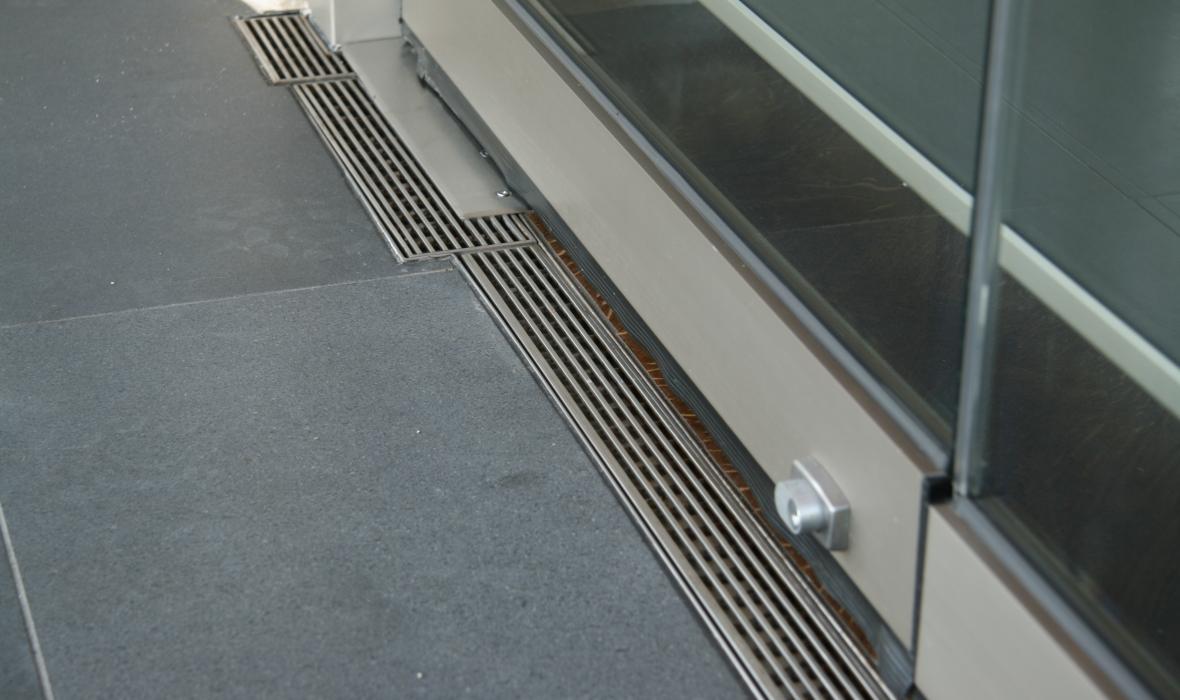
The threshold drain consists of an external linear grate which sits beside the doortrack. An integrated, concealed, sub-sill collects water and condensation around the doorway and conveys it to the external drainage system.
The streamlined design creates a disguised water barrier between indoor/outdoor living areas. This removes ‘trip- and-slip’ hazards – such as stepdowns and high gradient falls – that historically existed across doorways with rolling, sliding and bi-fold doors.

